Following a relatively fruitless summer transfer window, Manchester United have been left with an abundance of central midfielders. Manager Ole Gunnar Solksjær has often appeared to struggle with knowing what his preferred system is, let alone know which personnel to place in his starting line-up each week.
For the most part, the defence and attack have picked themselves so far this season, whether it be through form or injuries forcing lack of options. By contrast, it is the midfield positions that have not been nailed down by anyone, with the exception of Bruno Fernandes who has been nothing short of a revelation since his arrival from Sporting Lisbon in January.
The Portugese international has been involved in 23 goals in his first 21 games for the club at the time of writing.
Fernandes was met with excitement and expectation by the fans when he joined, and he duly delivered by helping propel the team up the Premier League table into 3rd by the end of the season. He slotted straight into the No. 10 attacking midfielder role where United were lacking depth and is a true danger man who can not only take games by the scruff of the neck, but also offer plenty of goals and assists in equal measure.
Over the summer months, most headlines were focused on the transfer saga surrounding Dortmund’s Jadon Sancho proposed move to the club. With that never materialising, the biggest transfer came in the form of Donny van de Beek arriving from Ajax for £35m.
There is no doubting the ability of van de Beek, a player which most people will be aware of having witnessed him playing a massive part of Ajax’s runs in European competitions in recent years, as well as a haul of domestic silverware. However, even with all of this considered, there wasn’t much fanfare around his arrival. Given the wealth of choice Ole already has in the central midfielder position, many people felt this move was unnecessary, especially considering the more desperate need for players in different areas.
It is for this reason that I wanted to analyse the data behind the 7 different players competing for the 3 or 4 midfield positions in the United squad. I will divide the analysis of the midfield roles into 3 different sections; defending, passing and attacking with a focus on the following players:
- Bruno Fernandes
- Donny van de Beek
- Fred
- Juan Mata
- Nemanja Matic
- Paul Pogba
- Scott McTominay
All statistics shown are for the players’ domestic league performances over the 2019/20 and 2020/21 seasons (as at 8th November 2020).
Defending
To look at the defensive aspect of the midfield role, I am going to focus on defensive duels, interceptions and blocked shots.
Defensive Duels
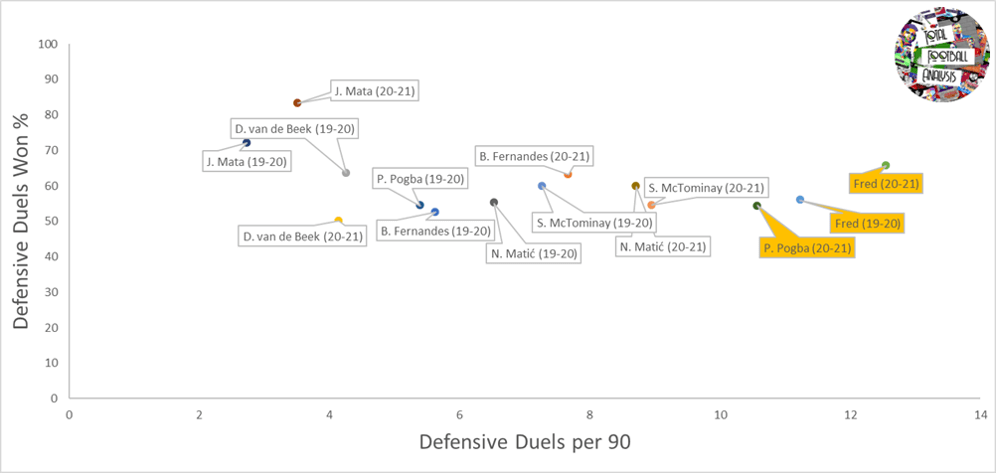
I have highlighted the 3 most impressive players based on the combination of these two statistics.
It isn’t surprising that Fred is involved in the most defensive duels, with a high success rate of over 60% too, but Pogba being near the top of this list is perhaps less expected.
Interceptions
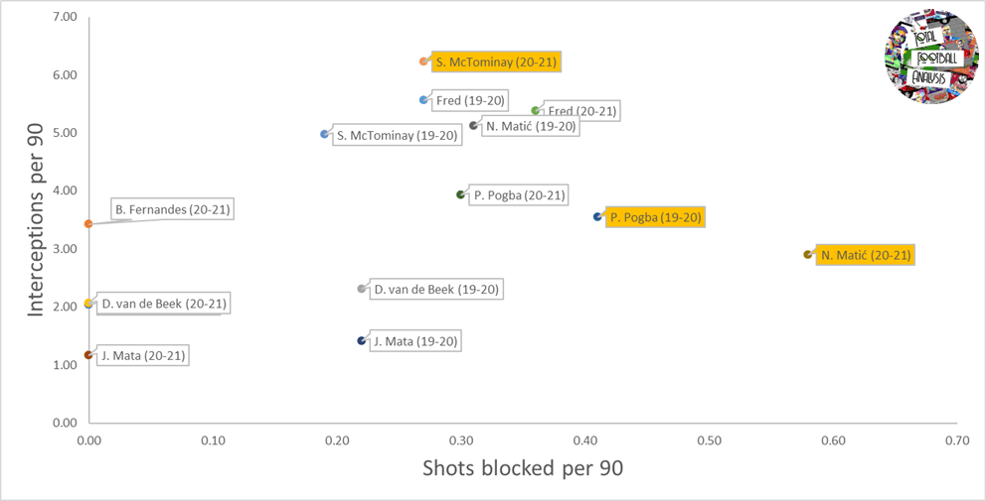
Again, Pogba features as one of the notable performers for shots blocked per 90 with Matic significantly ahead of the others in this area. However, it is McTominay and Fred who are leading the way for interceptions per 90, showcasing their energy and reading of the game.
This chart backs up the fact that Matic naturally tends to sit deepest of all midfielders and makes up for a lack of mobility with a strong reading of the game, whereas Fred and McTominay can push slightly further up the pitch and be more pro-active in their pressing approach to try and win the ball back and start counter attacks.
Pogba hasn’t ever seemed that comfortable in one of these holding roles as he can often get caught in possession in precarious areas, but this analysis shows that his defensive abilities are up there with anyone else in the team. Pogba also tops the aerial duel charts, averaging 4 per game with a success rate of about 60%.
Ole has often used 2 pivot midfielders when opting for his preferred counter attacking system, which then helps give the freedom of the 4 attacking players ahead of them. They have often lined up with Fred and McTominay in these holding roles, with both offering bags of energy and willingness to fight for the ball.
Matic is naturally a holding midfielder but suits playing alone behind 2 more creative midfielders in a 4-4-2 diamond system, which has been used by Ole this season too.
Pogba could easily be considered as another option for a more defensive role, if partnered with another holding player, based on these statistics alone.
Passing
I have considered passing, crossing, dribbling and assists to make up the more conventional aspects of the central midfield to benchmark the players with.
Passing
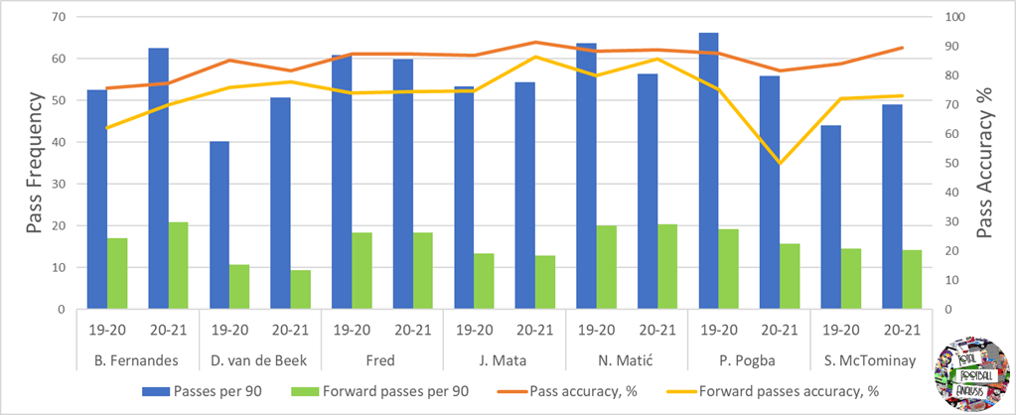
It is the deeper players in Pogba and Matic that play the most passes, averaging 66 and 64 per game, respectively, last season. This is fairly typical as most of the play is expected to come through them as they connect the defence to the more advanced players and Ole tends to not route for long ball football, which would bypass these kinds of players if adopted as a tactic.
Predictably it is Bruno Fernandes who has topped the charts for the number of forward passes per 90, averaging 21 per game this season. Fernandes’ relatively low passing accuracy suggests that he is playing dangerous high risk, high reward passes; this is backed up by the fact he is one of the best in the league in terms of key passes made per 90 this season at 1.01 per game.
As a contrast to Fernandes, Mata and van de Beek both have impressive pass accuracy (81% and 77% respectively) coupled with low pass attempts (54 and 45 per 90 respectively) as well as a low forward pass rate, which suggests that both players wait for the right opportunity to arise before making the pass. Mata has always struck me as a player that does the right thing at the right time and van de Beek looks to be in the same mould with this data backing this up.
In the 19/20 season with Ajax, van de Beek also played an average of 0.71 key passes per match which is second only to Fernandes’ rate mentioned above. Having come through the ranks at Ajax, van de Beek has been brought up with the “total football” culture. Although not much has been seen in this regard during his time at United, if van de Beek can get into more advanced positions, he can definitely cause a lot of problems for Premier League defences.
Crossing
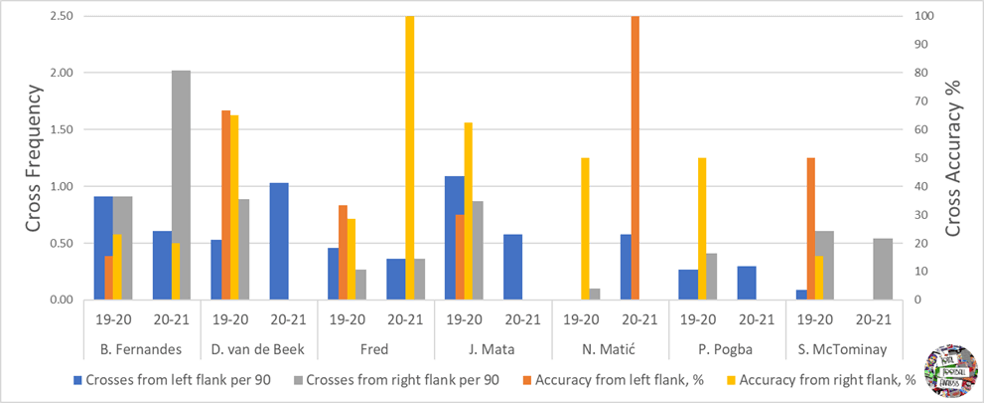
Removing the outliers Fred and Matic (with 100% accuracy but few crosses per game) from this list; Fernandes, Mata and van de Beek appear to be the most impressive crossers of the ball, with just over 5 crosses per match between them.
However, it is Mata and van de Beek who stand out over Fernandes with their accuracy standing at 44% and 65% respectively last season, compared to Fernandes’ 19%.
While Fernandes seems to have a free role, which could lead to these crossing opportunities rising, his accuracy suggests that a wide role would be more suited to either Mata or van de Beek.
With the right wing problem seemingly not yet solved for United, Mata, who has played in that role frequently over his 7 years at the club, and van de Beek both present strong arguments for filling that role over a more direct, pacy threat like Greenwood but I will come on to this more later on.
Assists
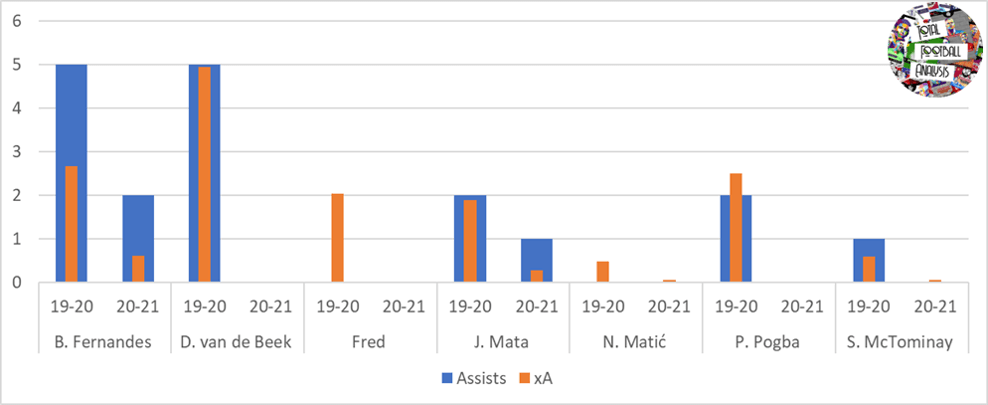
Once again for assists, a trait you would expect for a number 10 role, Fernandes tops the charts significantly outperforming the expected assists during his 14 games for Man United last season. Given he has already returned 2 assists in the 7 games this season, Fernandes is expected to easily surpass the 5 assists he provided from 14 games for the club last season.
Van de Beek performs very well here too, supplying 5 assists in 23 games at Ajax last year, which shows what he can offer at United if given the chance to push forward and play with the kind of freedom that Fernandes currently has.
Attacking
Midfielders have always been expected to chip in with goals as well as assists, so I have compared the shooting and goalscoring stats of the players below.

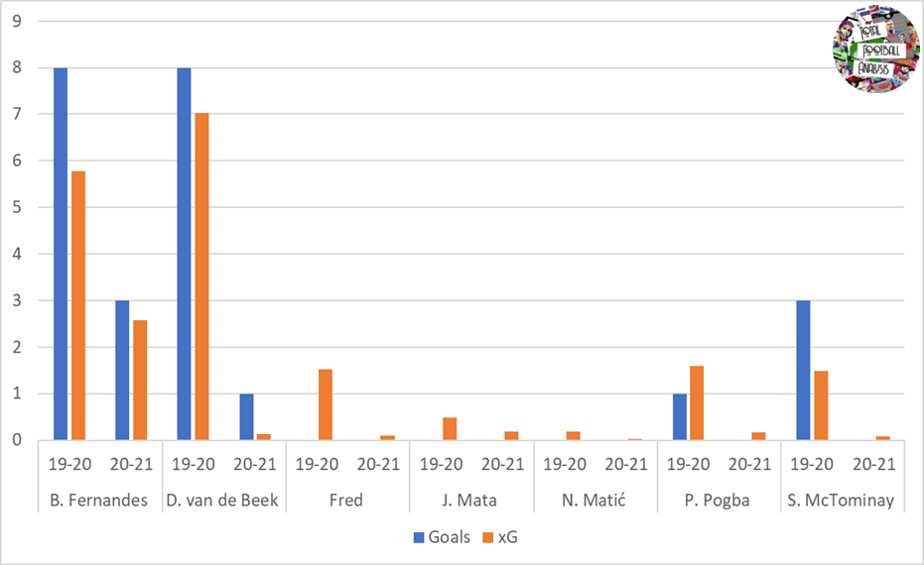
Looking at the data from the 19/20 season, Fernandes is once again leading the way in terms of attacking contributions on both shots and goals for the midfield players. He averaged over 3 shots per game which is significantly ahead of the closest player, van de Beek, who averaged roughly 2 shots per game for Ajax last season.
Looking at the next graph for goals scored makes good reading for van de Beek, who scored all 8 of his goals from open play, whereas half of Fernandes’ were from the penalty spot.
Conclusion
The problem Solksjær seems to now have is how to get the best out of quite a few similar players who are vying for the midfield roles.
The holding positions are probably easier to decide with Fred and McTominay the leading contenders (both based on data and Ole’s preference) to be handed the two roles if Solksjær opts for his preferred counter attacking 4-2-3-1 system but if United are expected to dominate possession, perhaps only one of these more defensive minded players, or Matic, will be needed.
It is in these games where they have come up against deep, rigid defences where United have struggled and Ole will have to make sure the players he picks to go forward can pick the lock to score or create goals and win matches.
For these more advanced roles in the midfield, the analysis would suggest that Fernandes should be a certain starter for his attacking threat. He could be utilised behind a front three or a split front two, which could open space up for him to provide even more goals.
It then comes down to a choice between Mata, van de Beek and Pogba depending on the system selected.
Although he has never enjoyed an extended run as a starter under Solksjær, the data here shows that there could still be room made for Mata on the right wing as per the formations shown below. Given his pressing success and accurate passing stats as well as the fact he’s left footed shows that an inside forward role would be most suitable. Even without the pace that Ole prefers in his front line, Mata could be played alongside Fernandes behind Martial and Rashford and contribute heavily to the attack.
Van de Beek seems to be of a similar ilk to Mata where he possesses the intelligence to play the right pass at the right time, either as part of the build-up play or the final ball to set up a goal scoring opportunity. He can also bring attacking returns like Fernandes so if they can be fitted into a system where they both thrive, then this could help break the Premier League’s more stubborn defences down.
Pogba seems to perform at his best when playing in a deeper lying midfield three, where he excelled at Juventus and for France more so than his second spell with Man United where he has never really been handed a role that fully suits him. The data shows that he is a strong midfielder defensively and can help carry the ball in a box-to-box role so could work in a 4-4-2 diamond formation which could allow Pogba, van de Beek and Fernandes all in the team at the same time.
It should be noted that one of the beauties of football is that things can’t necessarily be explained or justified by statistics, or the “Moneyball” approach alone. This is another reason that the solution to this problem will be a tough nut for Solksjær to crack.
Here are some possible formations that Manchester United could utilise to fit the above narrative.
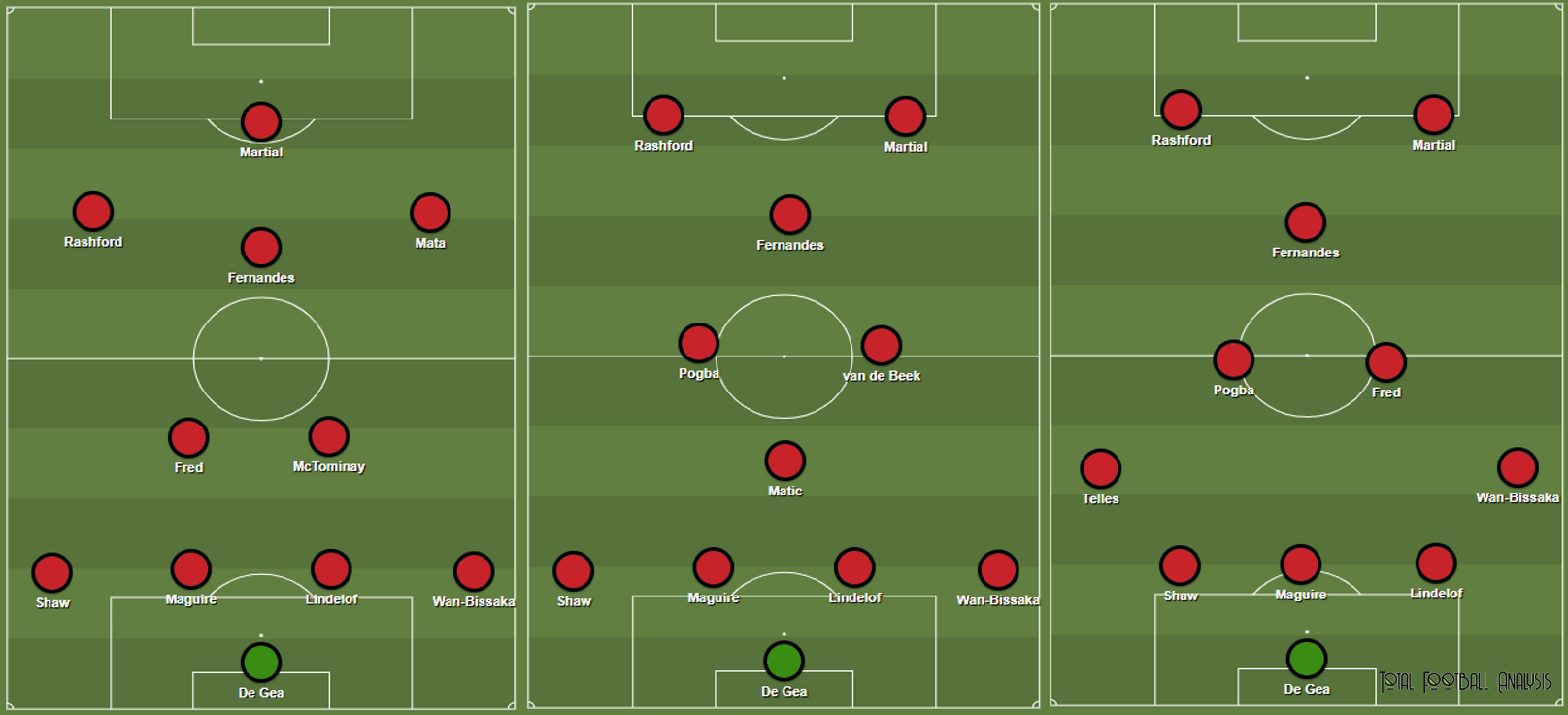
This problem of having arguably too many talented midfielders is one that many managers would love to have, but it is a problem nonetheless. It is how Solksjær deals with this that could define both his managerial career at the club and United’s season itself, with pressure mounting after a mixed start to the campaign.

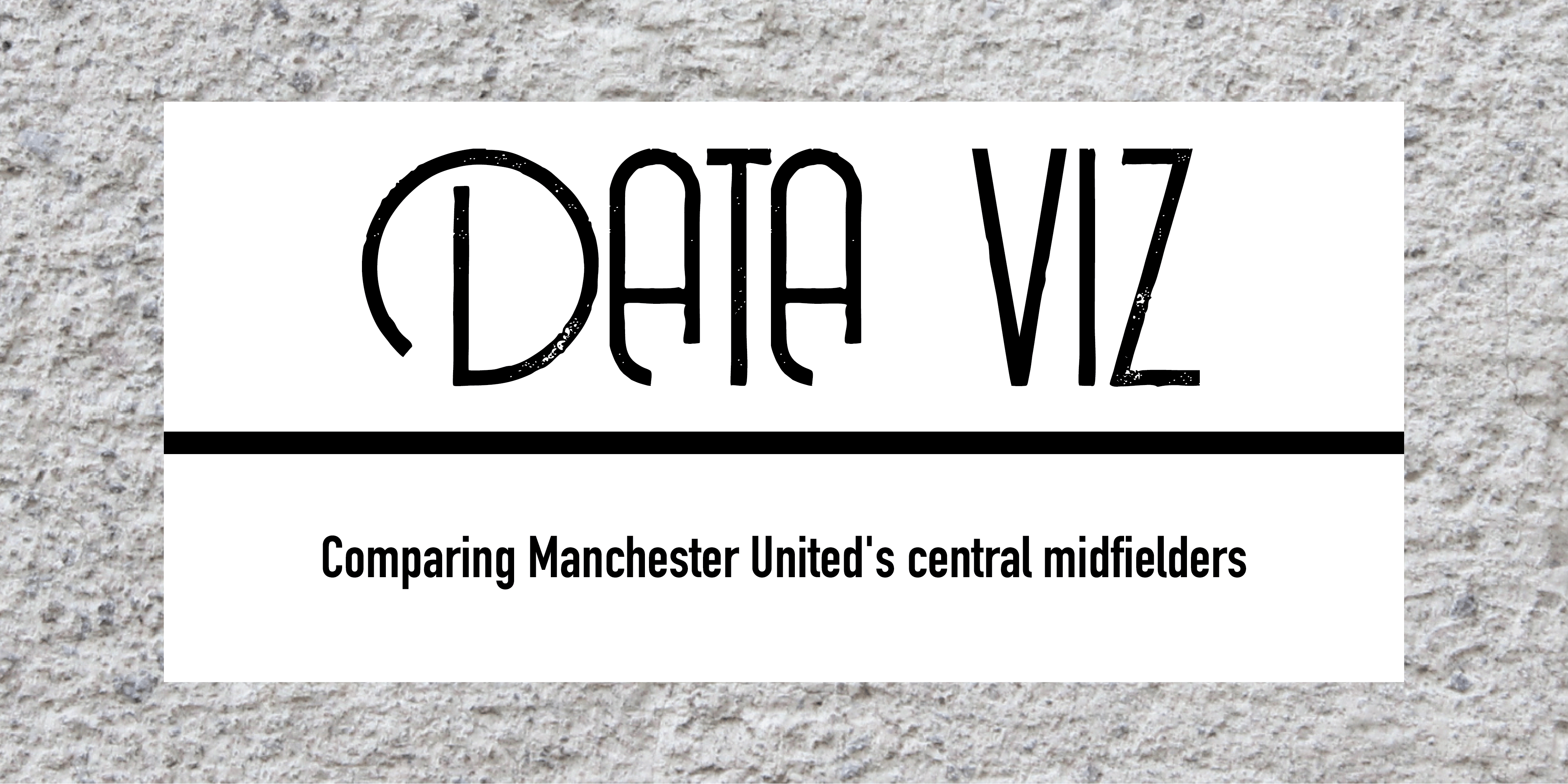




Comments